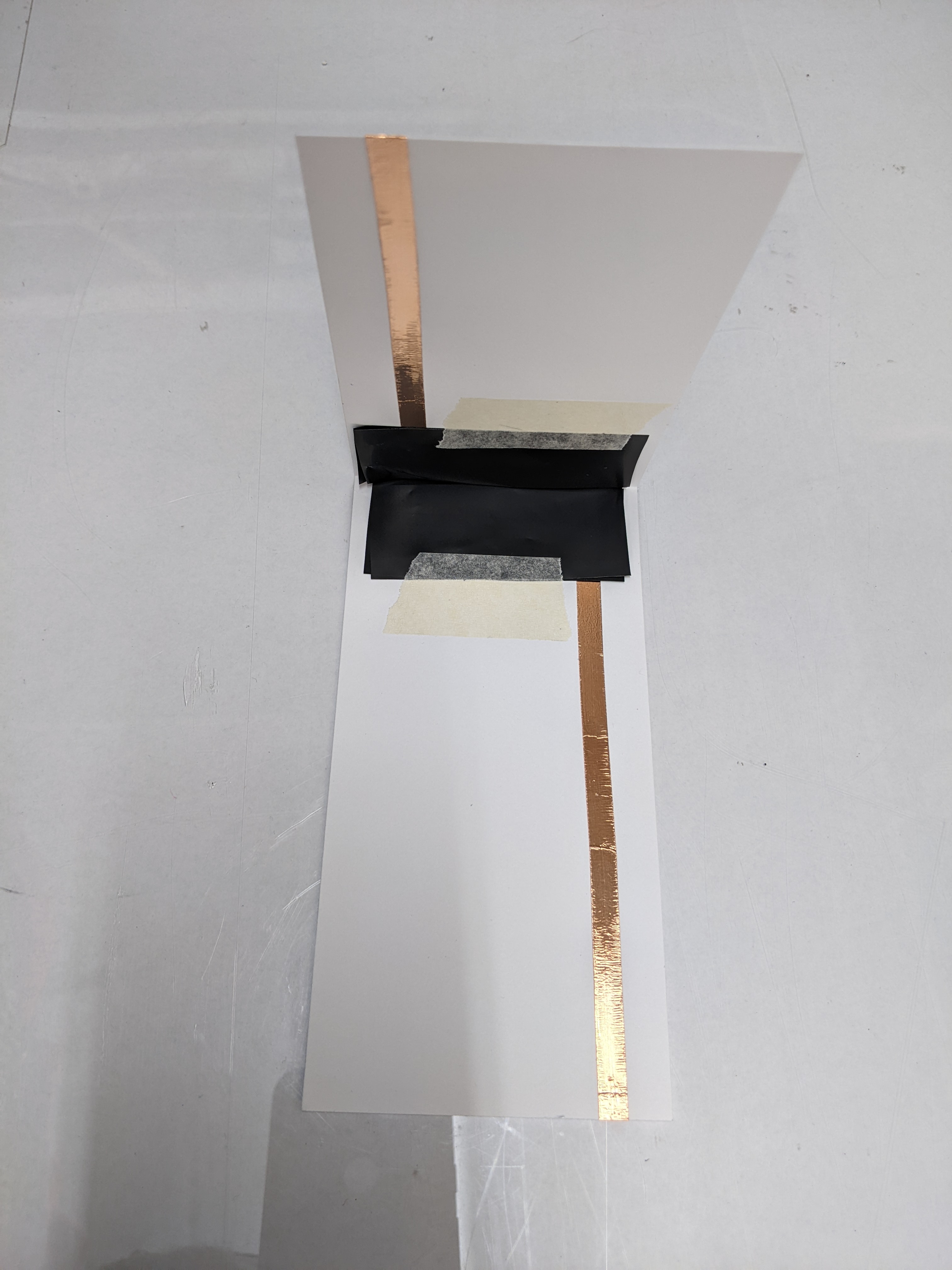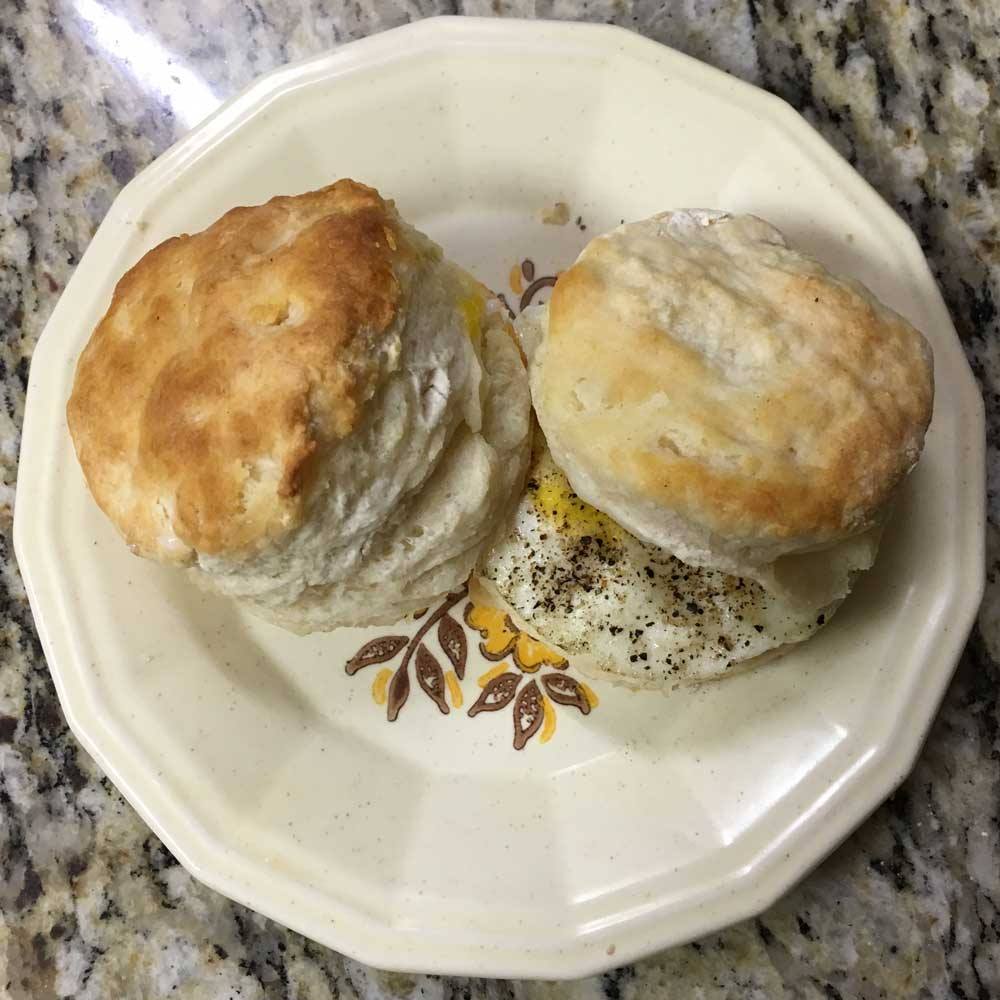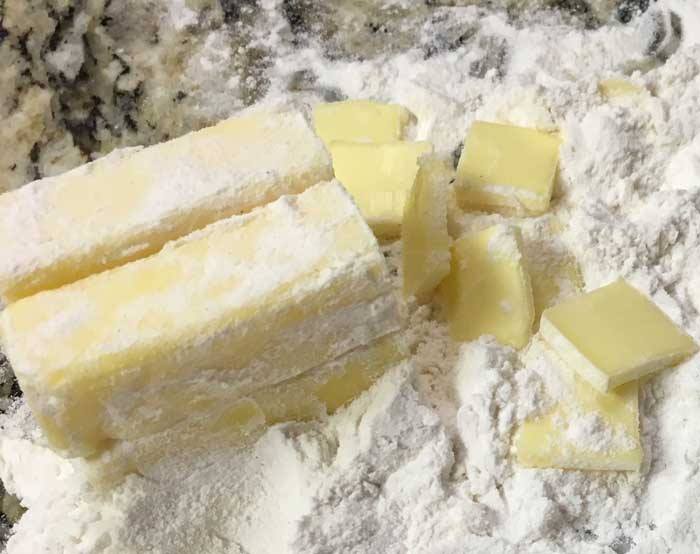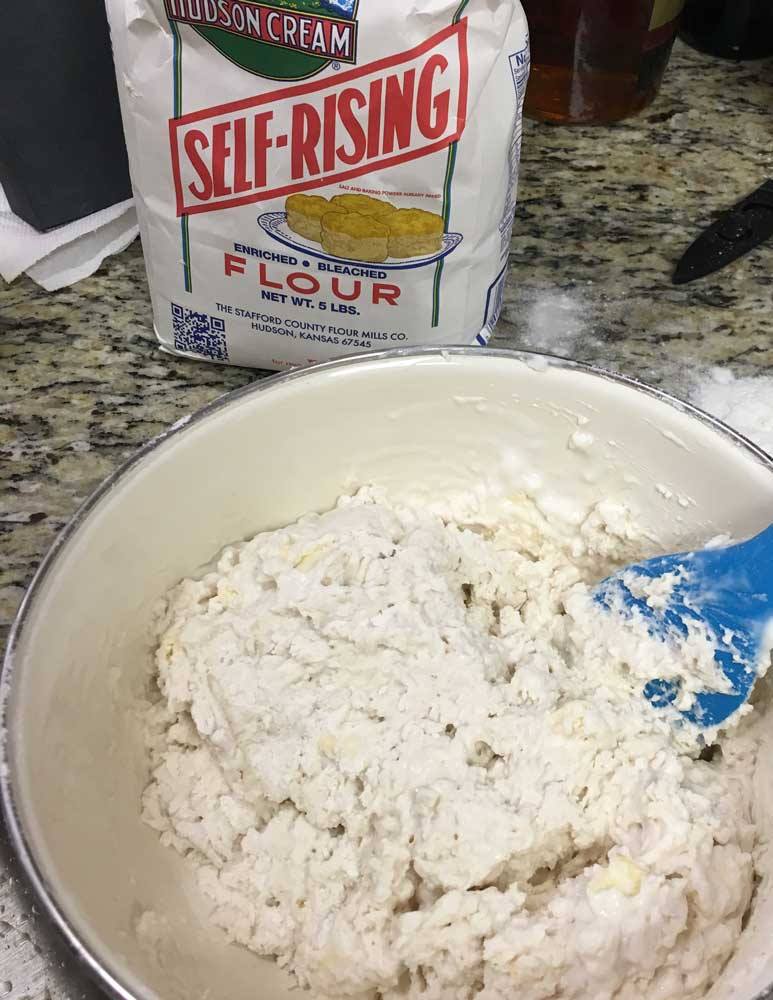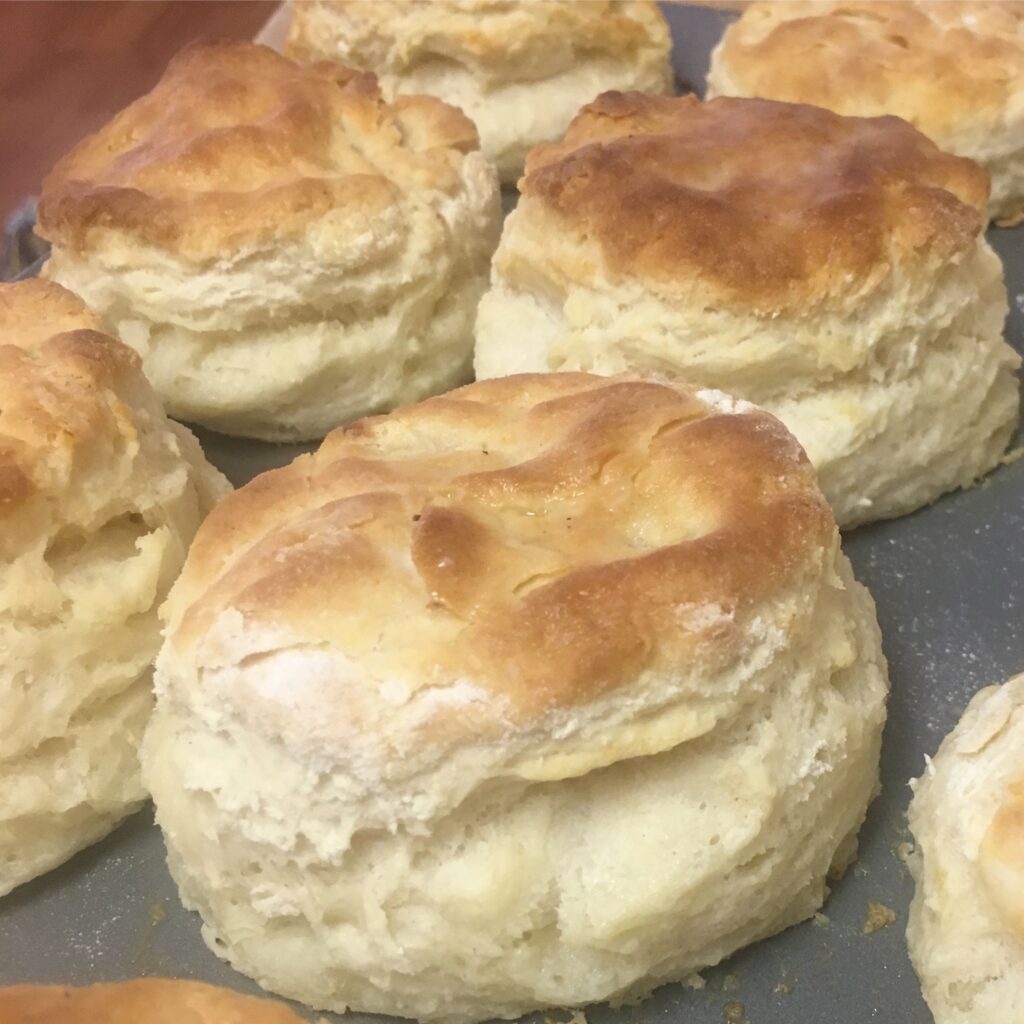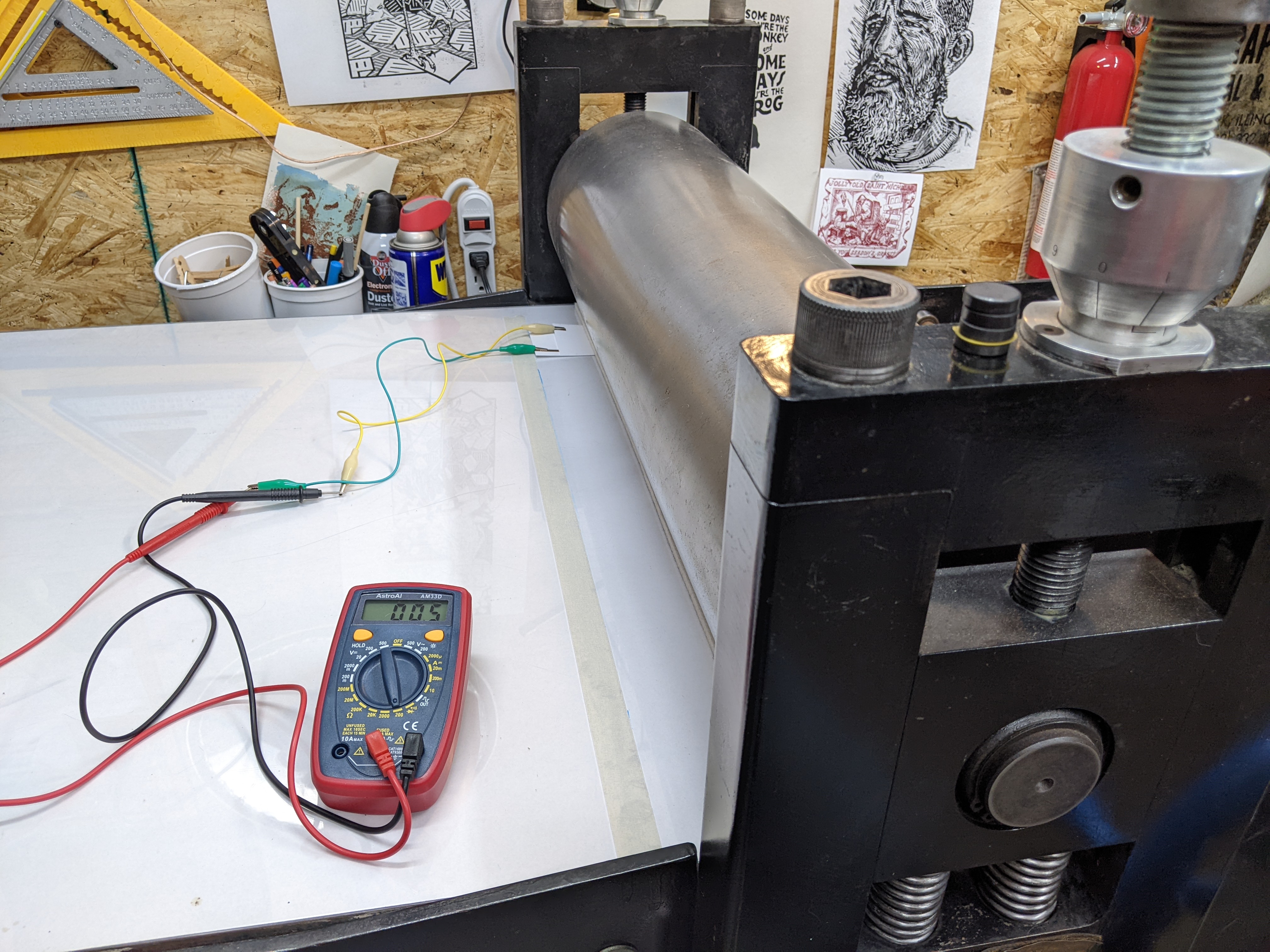
What you see in the image above is a setup for calibrating a press with or without micrometer gauges. The usual procedure for calibration is to zero out the gauges by taking the roller to the bedplate and then setting the micrometer barrel & thimble to zero. The problem is that the roller isn’t just resting by gravity on the bedplate, it’s tightened down there by screws which can be out of level.
I thought up this method around Christmas 2021 when I couldn’t sleep one night. It uses a few pieces of Velostat film, some copper tape, card stock, and a multimeter. Velostat is used in packing electronics to avoid static discharge. It’s a plastic impregnated with carbon and it becomes more conductive when pressure is applied. Many artists and makers use this property to create all sorts of things so this isn’t exactly new. I’ve never seen it applied to this task though.
The image below shows the simple sandwich of card stock, copper tape, and velostat. I’ve had good results by marking a line on the press bed parallel with the roller, allowing me to insert the velostat sandwich under a scrap of felt to the same depth along the roller’s width. I then roll the bed under the roller to a marked point. I do this on each side of the roller and measure the voltage.
